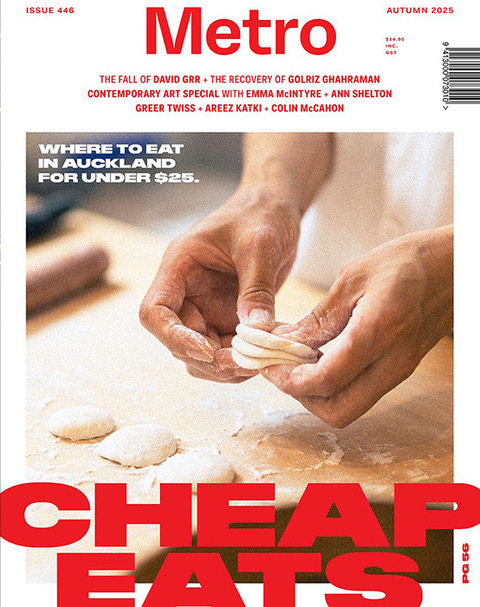Dec 10, 2016 Urban design
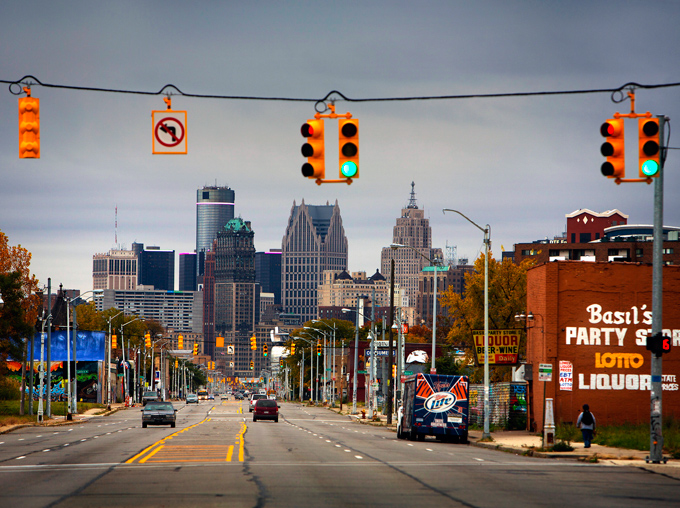
Racial and economic inequality, charter schools, a dysfunctional property market, developers transforming entire neighbourhoods, disputes about what “liveability” means in the 21st century. Not Auckland. Detroit. Metro visits the Motor City to find out if America’s most iconic story of urban disaster and recovery holds lessons for Auckland’s future.
She’d been Googling me. Meanwhile, I know very little about her except that Reed Kroloff — an American urban planning expert who came to Christchurch in 2014 to talk about how cities rebuild after disaster — had told me that if I wanted to know about Detroit’s recovery, I needed to talk to Nettie.
But to even get to the recovery story, you first have to get a handle on what caused Detroit’s fall, from one of America’s richest cities to one of its poorest. Some people put it down to race. Others to the failure of Big Auto. Seabrooks, though, has a more nuanced view.
“It was political, it was the GI Bill, it was the remains of the migration in the 20s, when you had the development here of the automobile industry. In Akron it was tyres. In Pittsburgh it was steel. It was this great migration of people from the South up to the North, which our current politics is still being influenced by. So it’s very complicated. And so you ask, well, is Detroit turning around? Or will it work? I would say, it depends.”
We meet in the Detroit Institute of Arts’ Kresge Court, a huge, brick-lined atrium made to feel vaguely like an Italian renaissance square. The DIA, where Seabrooks works, is one of America’s greatest art museums — a classical building best known for its Diego Rivera murals celebrating the city’s auto workers, paintings that act as the disconcertingly socialist heart of an institution whose collection was built up during the city’s hyper-capitalist heyday.
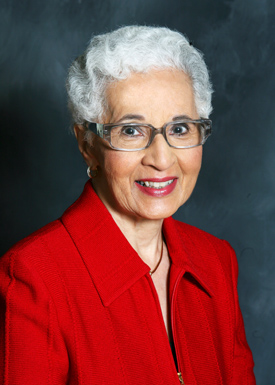
But that was then. These days, most people know Detroit for three things: cars, music and urban disaster. For years, “ruin porn” has poured out of the city; all those romantic photographs of empty neighbourhoods, abandoned houses and old car factories slumping into the ground under their own neglected weight.
On the face of things, Auckland and Detroit couldn’t be more different. Auckland is now one of the most unaffordable cities in the world, awash with absurd new-money glitz, leased European cars and Real Housewives grotesquerie, straining under the pressures of aspirational urban migration.
Detroit, meanwhile, is the poster-city for Rust Belt despair, shrinking from two million inhabitants at its peak to around 700,000 today. Much of that decline has come from decades of “white flight”, as white auto workers hopped on newly built freeways in their newly assembled cars and headed for suburbs filled with newly constructed houses, leaving behind a city that is now 80 per cent African-American, and where 40 per cent of residents live below the poverty line.
In 2013, Detroit finally gave in and filed for bankruptcy — the largest municipal insolvency in US history.
It’s a city shaped by the two most fundamental problems the US faces: first, what the country’s post-industrial future looks like now the American Dream is over; and second, how it deals with the traumatic truth that the Obama years failed to deliver their most hopeful promise — the possibility of a post-racial America.
The way Detroit is beginning to tackle these challenges may well contain a blueprint for 21st-century cities everywhere. And yes, that even includes Auckland.
The short version is that the DIA went into fundraising overdrive and raised US$100 million, which, rather than being spent on the museum, was used to pay the city’s pensions liabilities. In return, the collection was freed from city ownership and taken off the table. It was an extraordinary win-win: the art was saved, pensions got paid, and the bankruptcy was settled far quicker than anyone expected.
Seabrooks was close to that process. But then, it seems she’s been close to almost every major event in the city over the past 50 years. There is possibly no one with a longer, lived view of the causes of Detroit’s decline and its current, precarious shape.
“I was the first black woman executive at General Motors,” she tells me. “In the late 60s, there were only two black people in all of the GM building, out of 4000. I became an executive in 1972. I figured out that being a woman — and being black as a chaser — everybody was looking at me. And that I had to perform, my unit had to perform. But I couldn’t do it the way white men do it.”
After her time at GM, she was asked to be the city’s Deputy Mayor and then its COO. When her former employer was contemplating a move out of Detroit, she facilitated their headquarters move into The Renaissance Center on the riverfront instead. It was also while she was in the Mayor’s Office that the construction of two of this sports-obsessed city’s iconic sports stadiums got under way: Ford Field, where the NFL-playing Detroit Lions are based, and Comerica Park, home to one of the country’s most successful baseball clubs, the Detroit Tigers.
Seabrooks completed a Masters degree in art history in her seventies, having already been a collector of African-American art. The DIA is the only major American art museum with a dedicated African-American department, and Seabrooks worked to secure a significant donation to it from her old friends at GM. She also gave most of her own collection to the museum.
“I wanted to be an example to other African Americans, because I don’t believe we hold up our own end, in terms of the responsibilities we should take on,” she says. “I think because we as African Americans have been so disadvantaged, that being disadvantaged has become a way of life. That’s a very touchy subject. But that, to me, is going to be an important component of the success of Detroit. Everybody’s got a part to play.”
Part of her role at the DIA is to help the museum reflect the realities of Detroit’s demographics. “The museum had to change its perception of itself and its relationship with the community,” she says. “And all of the institutions have to do that. I’m not just talking about cultural institutions… And it can’t just be old white men, because the world is going to look more like me. Detroit’s going to look more like me. It already does.”
Our conversation was before the most recent racial clashes in the US, exemplified by the tragedies in Baton Rouge, Dallas and Charlotte. Conflict with police, the Black Lives Matter movement and angry reactions to Donald Trump’s appalling rhetoric have all shown how bad race relations are throughout the country.
One solution, Seabrooks suggests, is for new forms of black leadership to emerge, not just in Detroit but across America, something she believes the Obamas have modelled admirably. Another, though, is more specific to the city. As she says, the race question here “won’t get worked out if the schools don’t get straightened out. It all goes back to the schools.”

This has made Detroit fertile ground for the kinds of charter schools David Seymour and his Act Party seem to think are the silver bullet for New Zealand’s educational challenges. Act’s opponents could do a lot worse than pointing towards the mess the free-market model has made for Detroit’s children.
Anna Clark moved to Detroit in 2007. A journalist in her mid-thirties, she’s witnessed the fallout from the 2007-08 global financial crisis, watched the Big Three — Chrysler, Ford and GM — go cap in hand to the federal government for a massive bailout, and covered one of the most unusual bankruptcy processes ever seen. She was also, for several years, a writer-in-residence in the DPS system.
“There are so many fantastic students, teachers and administrators within the school system,” she says. “It is a disaster, though. It’s crazy. And what makes me angry is that people are taking advantage of the vulnerability of the city and the school system for their own personal profit… There’s no good accountability system. A lot of the charters are doing terribly. And there’s no mechanism to cut them off.”
The woeful state of the schools, charter and public alike, is the single biggest thing stopping young — and, let’s admit it, white — families moving back into Detroit from the surrounding suburbs. “The problem is mass poverty and segregation,” Clark says. “You can’t expect a principal or a school board to solve all of those problems.”
It’s a chicken-and-egg situation; you can’t attract the middle classes back to the city without decent schools, but under the American funding system, you can’t get decent schools unless you have more people paying property taxes. (A large proportion of school funding comes from what we call rates.) The stalemate is all the more frustrating because the opportunities to improve Detroit’s neighbourhoods are so immense — precisely because of their depopulation.
“For a long time, it hasn’t been a given that for more people to move in, other people have to move out,” Clark says. “Right now, we have space for everyone… Because we have so much open space, we have a pause that most communities don’t get, where we can choose to make it integrated going forward.”
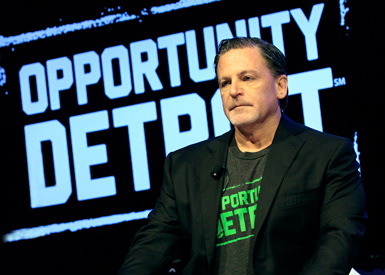
Gilbert moved Quicken’s headquarters to Detroit in 2010, and he’s bought up huge swathes of its downtown. He’s brought people and money back into the city. He’s renovating important mid-century buildings, helping to bankroll a new light-rail service that runs up the iconic Woodward Ave, and wants to turn a half-built prison into a Major League Soccer stadium. Sounds great. Except that Detroit was hammered by the housing implosion that precipitated the GFC. Even now, a big proportion of the city’s mortgage holders are underwater. So plenty of people are understandably cautious about the fact that a white guy — albeit one with Detroit roots — who runs a mortgage company is now being painted as this predominantly black city’s saviour.
Gilbert has maintained that Quicken had nothing to do with causing the housing crisis, saying that his company wasn’t in the subprime business. That, though, has been met with plenty of journalistic scrutiny, including a major data-driven investigation by the Detroit News in 2015. Clark points out that Gilbert is also notoriously cagey about interviews, as are many of his employees.
“I’m very cautious of him,” she says. “I do acknowledge that a lot of what he’s done has had a net benefit. There are buildings that no one was going to rehabilitate, and probably would have been demolished if it weren’t for him. That’s great. He has [also] given other private businesspeople nerve to come back to the city… [But] I do feel innately suspicious when any one person, no matter who they are, owns the majority of real estate in a particular area. That’s weird.”
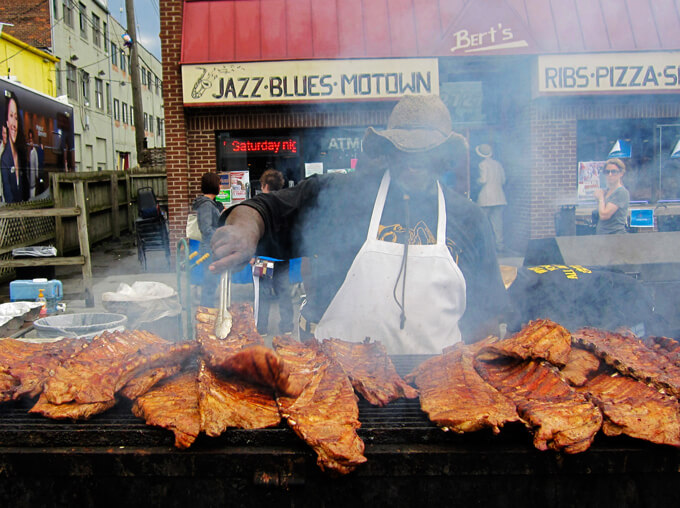
Whatever the truth about Quicken’s role in the housing crash, there’s no question many of Detroit’s poorest neighbourhoods were finished off by the subprime crisis. They’re also where you find the worst of the city’s blight. Abandoned houses, arson, gun crime, drugs, no public transport, no functional businesses except liquor stores and fast-food joints — this is still the daily reality for much of Detroit’s population.
The state of Detroit’s outer neighbourhoods kicks the recovery narrative into touch. This is where America’s post-industrial rubber really hits the road. And that makes Cox — a charismatic African- American New Yorker in his late fifties — one of the most important urban planners in the world right now.
“Urban revitalisation takes on very specific patterns,” he tells me, pointing occasionally at a massive, heavily marked map on the wall behind him. “It starts from the centre — the heart of the city, its downtown and immediate adjacent neighbourhoods, its riverfront. In Detroit, that’s an area of 7.2 square miles. From here, revitalisation progresses slowly outward, to what I argue is the soul of the city, which is its neighbourhoods. But when you have 138 square miles to regenerate, the soul of that city is very far away from its heart, and it takes longer to get to it.”
Beyond the Gilbert-led downtown and midtown resurgence, there’s no meaningful property market in Detroit. For Aucklanders, it’s almost impossible to picture how bad things got. You could buy whole neighbourhoods for less than the cost of an ex-state house. A perfect Mies van der Rohe townhouse set you back less than $100,000. In 2013, on my first trip to the city, I met a guy who bought an ex-police station off the city for five bucks, because they didn’t want to leave it to arsonists.
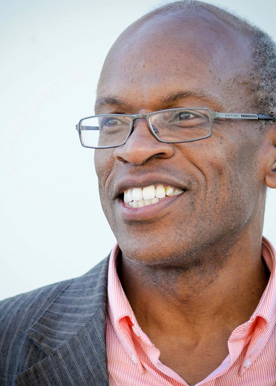
“We talk about the ‘missing middle,’” Cox continues, “which is the housing between a single-family detached house with a yard, and a high-rise apartment building. Almost everything in between — condos, courtyard houses, row houses and townhouses — is basically missing in Detroit. While the city was managing population decline, it wasn’t building these new kinds of urban houses, but we’re finally starting to see that change. The only place that type of investment pencils out, however, is in the downtown, and the immediately adjacent neighbourhoods. Even there it still requires public subsidy.”
Cox’s strategy in the outer neighbourhoods is completely different. It’s also radical, brilliant and based on a single driving principle: fairness. “Having been off the radar for a few decades, neighbourhoods that failed to attract new residents are now at an advantage. As revitalisation begins to happen in these neighbourhoods, we can ensure equity is a critical component.”
Cox’s neighbourhood experiment, currently under way in pockets around Detroit, refuses any new construction of single-family homes. Instead, the city works with developers to rehabilitate those houses still standing. The economics of this strategy, he points out, are pretty straightforward. If new construction of a single-family home costs on average, $120,000, but that home is surrounded by others that are only worth $60,000, a developer loses $60,000 right out of the gate. If instead they spend an average of $60,000 to renovate an existing home, and the city makes a critical mass of properties available, the numbers start to work out.
In Cox’s plan, the developer has two specific obligations. First, they have to rehabilitate properties for affordable rental and eventually home ownership, which Cox sees as essential to equity and inclusive growth. “We want to prevent this development from leading automatically to gentrifying the neighbourhoods,” he says. “The idea that the city would put in millions of dollars to protect affordability wins a lot of people over. Typically, the housing model focuses on single-family ownership, and that really means renters are unwelcome. We believe we can regenerate a neighbourhood and assure rental possibilities remain.”
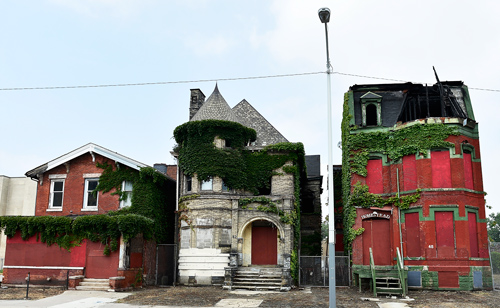
And second, developers are required to take on vacant lots adjacent to each house they rehabilitate. Single vacant lots must be made visually appealing, and multiple lots must aggregate into a communal area like a park or be turned into neighbourhood-scaled businesses like cut flowers or food production.
“People in Detroit have been squatting on land for years,” Cox says, “unable to convince the city to sell. Now we’re talking about these lots not as the land use of last resort, but as generative. Furthermore, the people running these productive land businesses are residents — entrepreneurs who have continuously struggled to get half an acre, a third of an acre. Now the city is creating a framework for residents to not only own these lots but to manage them successfully.”
The productive land strategy is intended to create economic activity and increase the desirability of the neighbourhoods. But it also saves the city money in the long term. As Cox points out, across America the green-space strategy has long been one of spreading grass seed and creating a mowing regime that costs millions in maintenance every year.
But perhaps the most extraordinary part of his plan is something that seems anathema to the very idea of the Motor City: making the bicycle a primary mode of transport. Detroit is flat, with wide arterial roads. That leaves plenty of space for cycle lanes. Cox argues that bikes are a crucial piece in the affordability puzzle. In Detroit, a third of residents can’t afford a car, and the city’s insurance rates are amongst the highest in the country. Safe, functional cycleways help alleviate that cost.
The overall idea is to create what Cox and his team call “20-minute neighbourhoods”, where residents can access all the urban amenities they’d expect — fresh food, schools, libraries, public transport links and so on — within a 20-minute walk or bike ride from home.
These 20-minute neighbourhoods will then be linked to the city’s major commercial corridors via an enormous bike network. To help build it, Cox has brought in the team that developed Copenhagen’s incredible cycle system.
As our conversation goes on, I want to bundle Cox into my luggage and smuggle him to Auckland. He tells me about “pink zoning”, a concept where City Hall works with residents and developers to reduce bureaucratic red tape so that more land is available for mixed-use and sustainable projects. He talks about historic preservation, developing the waterfront, working with start-ups, greening the city; about creating a healthy, fair, dynamic, multicultural urban environment out of one of America’s biggest urban tragedies.
And it’s not just talk — it’s happening. The difference between Detroit’s ability to do this and Auckland’s urban crisis is stark. In Detroit, because there’s no functional property market, no one has anything to lose. It’s hard to be a nimby, because almost everyone’s backyard is fucked. Auckland, as we know, is a different story. The contrast shows just how oppressive our insane house prices are on future-oriented thinking.
But what about jobs, right? It’s one thing to pretty the city up, but people are going to come back to Detroit only if there’s work for them.
Quicken Loans is one major company that calls Detroit home. Another is the enormous pizza chain Little Caesars, which has unveiled plans for a new HQ on Woodward Ave, the façade of which will have 4.3-metre glass windows shaped (seriously) like pizza slices. Its owners, the Ilitch family, also own the ice-hockey franchise the Detroit Red Wings, and are building a new stadium for them called Little Caesars Arena. No prizes for originality.
But pizza and mortgages aren’t exactly 21st-century industries. Nor is auto, or at least the auto Detroit was built on. The challenge, then, is to figure out what Detroit’s next big opportunities will be.

“One of the main issues the city has is a narrative problem,” Barlow explains, when I ask him why he set the programme up. “There’s only so much truth a writer in Auckland can garner on a Skype call, or a writer from San Francisco flying in for a weekend… There are some truths to be told about what’s going on here, and not just one truth through one set of eyes. So the idea that we could invest in and celebrate the narrative of this place, and fill the city with writers who would be interested in it, captivated my imagination.”
As his day job, Barlow works in advertising, as the creative director for Ford’s campaigns. He points out that even though auto manufacturing has changed, it’s still very present in the city’s life, and there’s an enormous amount of auto-connected work. The federal bailout, particularly of GM and Ford, seems to have achieved what it was for, dramatically reducing the long-term impact of the global financial crisis on Michigan’s car industry.
“It’s a really interesting time to be in automotive,” Barlow says. “The multidimensional technologies and voice recognition work, hybrid work, energy work, fuel-cell work. It’s a hell of a lot more dynamic than it was in 1978, when it was, ‘How big an engine can you put in there? And maybe a seatbelt.’”
Unesco recently designated Detroit a City of Design, and it’s easy to see why. The growth of the American auto industry was predicated on good design as much as technology, and the local art and design schools have been integral to this for decades. Cranbrook Academy of Art, for example, is often spoken about as the cradle of American modernism. Charles and Ray Eames, Eero Saarinen, Steelcase and Herman Miller all started in or near Detroit. And Detroit’s College for Creative Studies still produces many of the world’s best car designers.
“This is a city that is obsessed with making things,” Barlow says. “It’s the furniture capital of the world. Michigan has great stuff in that way. With the automobile, the musical culture, and that heritage of craftsmanship, there’s a lot here.”
One of the growth areas Barlow points to is what he describes as “honest luxury” brands, like Shinola Watches, Detroit Denim, Detroit Bikes, and a high-end shirt company called Lazlo — all of which pay living wages, don’t outsource jobs, and use, where they can, sustainable materials.
It’s an awful lot cleaner than the industries that shaped Detroit and other cities like it. The cars are getting cleaner, too, with companies like Ford leading the way on mass-produced hybrid and electric vehicles.
Detroit and its new employment opportunities are providing a model for how you turn a Rust Belt city green. Michigan is one of America’s largest agricultural producers, with the second-biggest diversity of fresh produce in America behind California. Eastern Market is where you find it: an enormous, well-functioning fresh-food market, which both Cox and Clark describe as one of the city’s most democratic spaces and is regarded by everyone I’ve ever met there as one of Detroit’s greatest assets.
The produce is always local, cheap and seasonal. Detroit solved the air-miles question years ago, out of necessity, because none of the major supermarket chains wanted to open up there. Eastern Market is about to go through a major expansion, including building new, affordable housing for its workers.
But the most intriguing part of Detroit’s green future is blue. America’s Great Lakes hold around 20 per cent of the world’s freshwater reserves. Michigan is squeezed between several of them. The question is how to both protect and monetise the water at the same time. No one seems to have the answer yet, except there’s wide agreement it won’t be a case of building pipelines out to dryer states.
Here’s the record-scratch moment, though. You don’t go through a century of auto manufacturing without producing massive amounts of pollution along the way. There’s plenty of Detroit that still needs to be cleaned up. Then there’s the Flint water crisis, which made international headlines earlier this year. Flint, one of Detroit’s desperately poor satellite cities, was rocked by the discovery that it had a lead-poisoned water supply — all because a few city administrators were trying to save a tiny amount of money each year.
There’s a horrible irony here, as Barlow points out, which is emblematic of the kinds of contradictions that still plague Detroit. “The idea that you’re sitting literally next to the largest freshwater resource in the world, and you can’t get water to the people in a healthy way — what does that say?”
I suppose one defence is that at least Detroit’s pollution of its waterways is historical, and that they’re trying to find ways to fix it. As the Havelock North contamination debacle and Massey University ecologist Mike Joy’s outstanding freshwater research have shown, I’m not sure we can say the same thing.
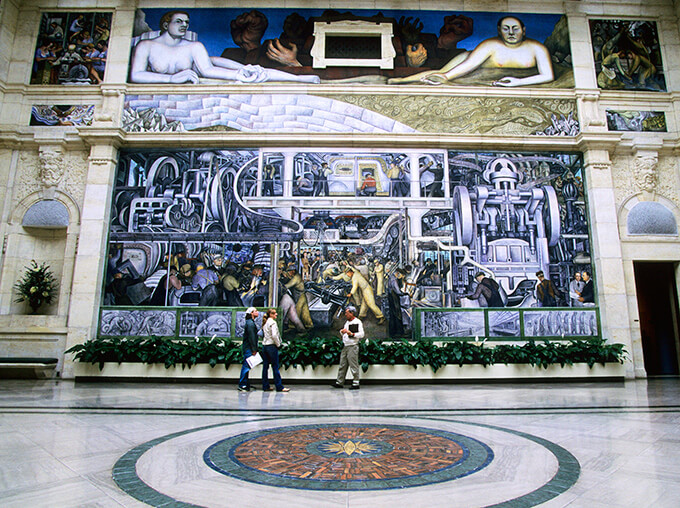
When I ask Seabrooks what will really save Detroit economically, she shrugs, the same as everyone else. But she does believe that if anywhere can crack the post-industrial conundrum, it’s Detroit. Innovation is in its bones, she says, going all the way back to Henry Ford. Everyone I speak to has a similarly cautious optimism.
“Ultimately I feel hopeful about the place, or I wouldn’t be here,” Clark says. “Partly I’m here as a journalist, but also because I like it. I couldn’t stay if I was day to day miserable. That said, there are huge problems. Sometimes people are so excited to get to the comeback part of the story, they can neglect the fact that there are problems that were generations in the making and that will take generations to solve.”
And from an urban planning perspective, it’s clear that Cox wouldn’t want to be anywhere else.
“Our commercial advantage over other cities is an abundance of land,” he says. “Forty per cent of the city is under public ownership. So when we talk about an experiment, we can actually implement the experiment. I think it’s taken a while for the city to understand that what they saw as a drag on their recovery would in fact be a catalyst for revitalisation.”
After Seabrooks leaves, I look up at Rivera’s auto workers, heaving away at Ford’s River Rouge plant. At the time it was painted, Detroit’s factories were the most powerful and innovative in the world. Rivera spent months in Ford’s plants, watching the workers, understanding the daily rituals of life on the assembly line. There’s no question who the heroes are in his paintings: the workers, black, white, Mexican, all slogging together. On the south wall, there’s a portrait of Edsel Ford, in a suit, his arms folded while the labour goes on around him.
When the paintings were first revealed, they were decried as Marxist, and even blasphemous. What they actually are is a perfect portrait of the Motor City’s 20th century; an American Dream that had, embedded within it, the monsters that would eventually turn it into an urban nightmare. But all nightmares end, eventually. The real truth about how to make America great again is unfolding quietly, right now, on the streets of Detroit.
This article originally appeared in the November issue of Metro.
Follow Metro on Twitter, Facebook, Instagram and sign up to the weekly e-mail





